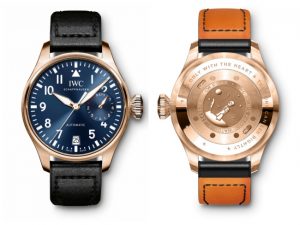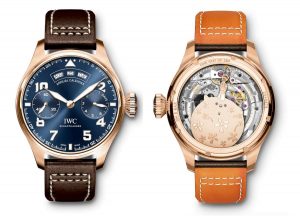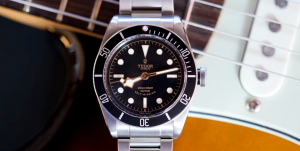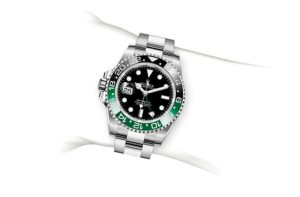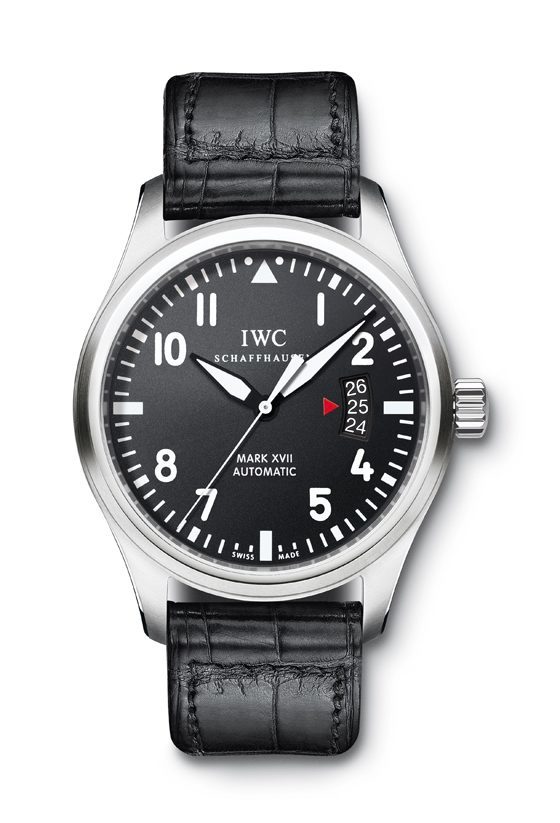
If you’re curious, “center seconds” feature, sometimes called hackers or stop seconds, is one in which, if the crown is pulled out the second hand stopped in aviation-related watch a common mechanism. This is for pilots (admittedly moreso before the invention of the quartz watch and satellite), while helpful, because it allows them to accurately adjust their watches to seconds before takeoff.
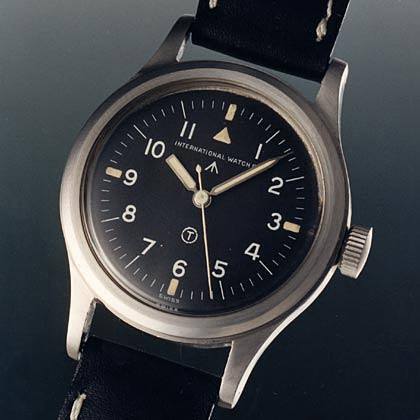
The IWC Mark XVII is a very different watch than the Mark 11 (the original reference in the series), and in the 67 years since this collection’s release — and subsequent re-release in 1994 as the Mark XII — much has changed. As an evolution of the Mark 11, the Mark XVII is barely recognizable; the 11 was developed as a reliable, utilitarian military watch that could be mass produced and that catered specifically to the specifications of the British Royal Air Force. However, when the XVII is compared to the more recent Mark XII, and to later iterations including the Mark XV and XVI (both XIII and XIV were skipped due to numerical superstitions), the style of the contemporary watch is more in line with its predecessors.
The few similarities to the Mark 11 lie in the bold quarter hours, triangle mark at 12 o’clock, similar font for the hour numerals, and a clear lean toward readability with the black and white-accented dial. However, when the XVII is compared to the XII, the focus on the luxury aspect of the watch becomes more apparent — the improved quality of the finishing, the date wheel at 3 o’clock, and the continued focus on readability remains.
What IWC has certainly shown throughout this series, especially when the Mark XVII is compared to its predecessors, is a bold willingness to grow. The changes IWC has made over time to the series have mostly been for the sustained and continued relevance of the model. Sword-shaped hands, unusual date indicator, a different movement (with a base by ETA rather than Jaeger-LeCoultre) — if any of these changes had occurred too suddenly from one iteration of the Mark series to another, purists might have taken issue. But since the 1990s, the brand has solidly established the Mark series as one meant to evolve — and the Mark XVII has done so appropriately.
In case you can’t tell, I like the modern IWC Mark series; more specifically, I like the Mark XVII. It pays respect to the history of the series, with subtle nods to both the ’40s and the early ’90s, in ruggedness, functionality, and readability, but also is very much its own watch, bringing a variety of modern touches together. The IWC Mark XVII happens to be one of the smaller watches within the complete Pilot’s Watch series, and it has some of the broadest overall appeal of all of the brand’s watches. IWC has done its job well; now we only need wait for the release of the Mark XVIII.
Caleb Anderson is the Director of Outreach at the online vintage watch boutique theoandharris.com. Since starting at Theo & Harris, he has garnered extensive knowledge on vintage watches, and spends much of his time sharing his opinions within the field. Currently located near New York City, he is a persistent student in all things historical, a writer on watches, and a casual runner.
